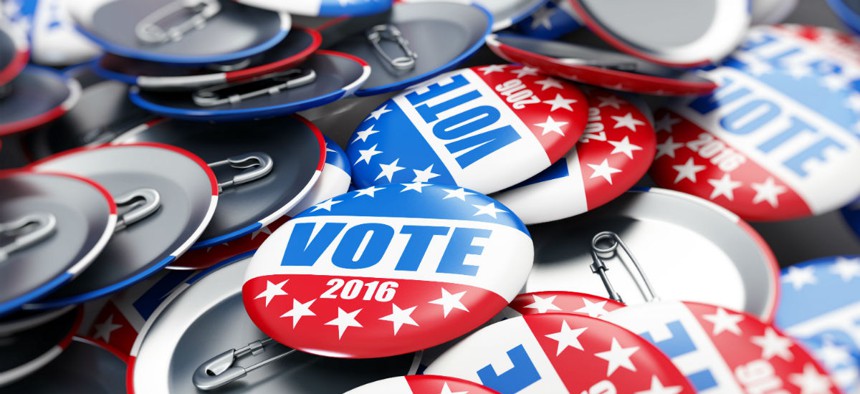Military Services Inconsistent in Administering Voter Aid Program
Watchdog finds differing performance standards that could jeopardize counting of overseas ballots.
With the 2016 presidential race well under way, the military services are hearing from their inspectors general that their mandatory programs for assuring that eligible warfighters can vote are inconsistently administered.
The Defense Department inspector general, in a report released last week, found the service watchdogs doing the annual reviews of the Voting Assistance Programs run by the Army, Air Force, Navy and Marines “lacked a standardized definition for voting assistance program compliance with federal statutes and DoD policy, which made it difficult for stakeholders to verify or to assess compliance across the Services.”
In the 2012 presidential election, some lawmakers grew concerned that mail delays threatened counting of all votes cast, and they called for centralizing mail redirection.
Under the Uniformed and Overseas Citizens Absentee Voting Act and its 2009 update titled the Military and Overseas Voter Empowerment Act, the services are required to work with states to assure that service members and their eligible dependents overseas are aware of their right to vote and have the tools necessary to exercise that right.
Because the service IGs reviewed performance criteria without a standard definition of compliance, the Pentagon IG recommended that the director of the Federal Voting Assistance Program Office coordinate with them to initiate a dialog with the Senior Service Voting Representatives. Officials should work toward establishing a standard DoD definition of voting assistance program compliance in such areas as training in election procedures and inclusion of officers’ compliance in performance reviews.
The Army, Air Force and Marine Corps were all found to have complied effectively with requirements. But the Navy’s IG concluded that its voter assistance program “was not fully compliant with federal statutes and DoD policies and was only partially effective,” in part due to frequent turnover of officials. A subsequent update of regulations was said to have corrected one of the Navy’s problems.
Pentagon managers were briefed on the report but were not given time to formally respond.




